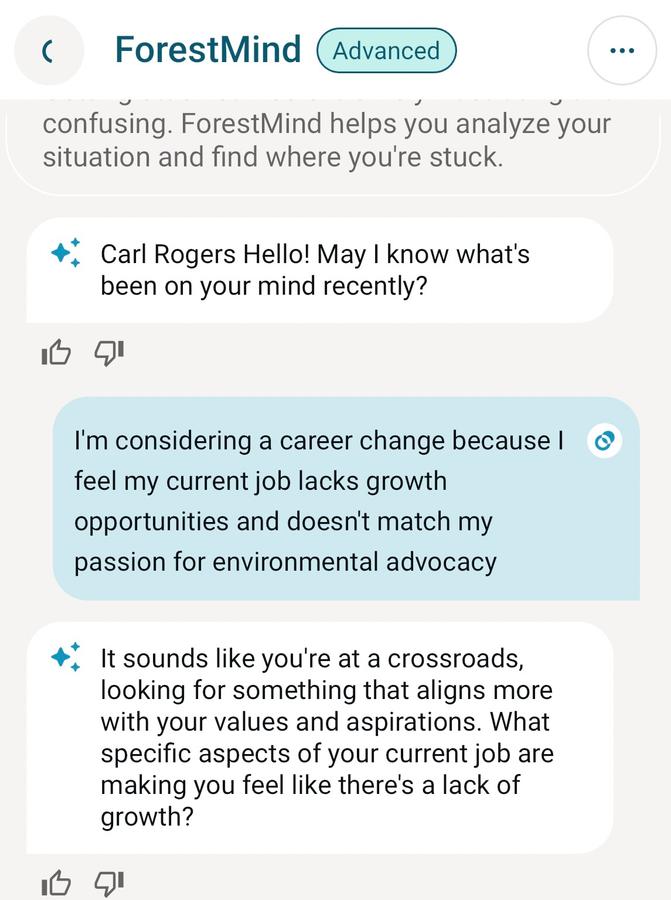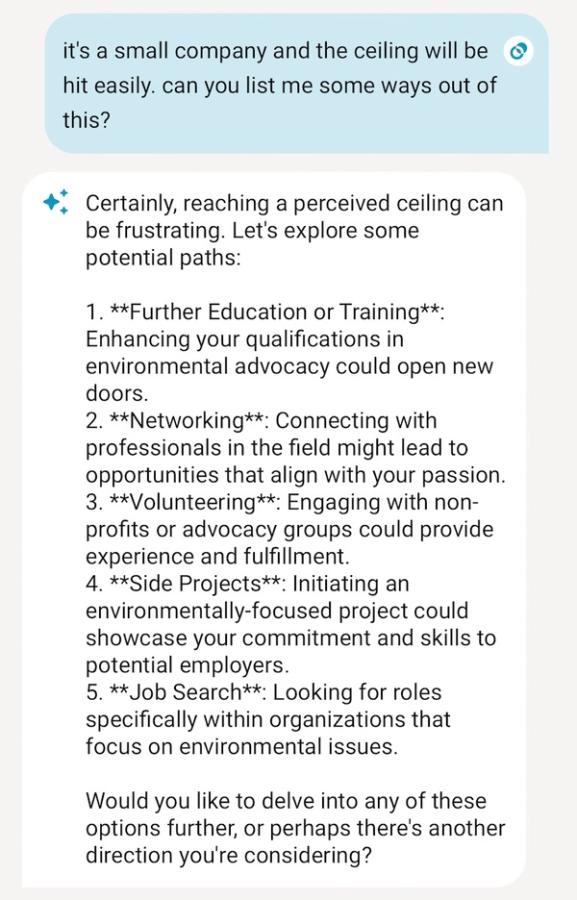
Ghosting and Avoidant Behaviour: Why We Pull Away and 3 Ways to Heal from It
Have you ever experienced ghosting? The two of you were chatting happily the night before, and the next day the person suddenly disappears, never replying again?
MindForest is an AI Coaching app, It's a space where people can grow and turn their thoughts into journal entries, almost without realising it. Programming ChatGPT to serve as your personal growth coach, the key is to be precise in your requests, specifying the approach it should adopt.

I've been working with psychology for quite some time now, teaching classes and running workshops for companies. Despite loving the work, I always found it tough to reach more people without losing that personal touch that makes psychology so powerful. Then, this year, something clicked. The rise of large language model (LLM) technology opened up a new avenue I hadn't considered before.
Driven by a mix of curiosity and excitement, I decided to dive in and see if this tech could help me scale the benefits of psychology. That's how MindForest came to life. It's an AI Coaching app, but I like to think of it as more than that. It's a space where people can grow and turn their thoughts into journal entries, almost without realising it.
This journey of creating MindForest has been full of learning. I've picked up a few tricks along the way about making AI feel more like a coach and less like a robot. I’m here to share those lessons, hoping they might help someone else find their way, just as they've helped me and, hopefully, the users of MindForest - but these tips are applicable to different AI systems, like ChatGPT.
Imagine programming ChatGPT to serve as your personal growth coach. The key is to be precise in your requests, specifying the approach it should adopt. For instance, you could ask ChatGPT to guide you using the Hexaflex model from Acceptance and Commitment Therapy (ACT). This model emphasizes psychological flexibility and is a powerful framework for understanding and addressing personal challenges and here's an example prompt that you could try on ChatGPT. (p.s. You don't need this if you're using the MindForest app. We've already made the necessary tuning for you)Prompt

In the journey of personal growth and self-improvement, the depth and detail with which we express our situations and emotions can significantly influence the effectiveness of the guidance we receive. This principle holds true not only when interacting with AI models like ForestMind but also in the broader context of seeking advice, whether from technology or human.
When we communicate through digital platforms, we miss out on the non-verbal cues—facial expressions, tone of voice, body language—that play a crucial role in human interaction. These cues often convey much more than words alone can express. Thus, the more detailed and explicit we are in describing our feelings and circumstances, the more tailored and empathetic the advice or support we can expect.
Do's:
Don'ts:

Being direct about your needs and how an AI tool like ForestMind can assist you is akin to looking into a mirror, reflecting not just the answers you seek but also clarifying your desires and questions in the process. This self-reflective approach is crucial for personal growth, as it helps to articulate and understand your own needs, paving the way for more tailored and effective assistance.
For instance, if you're in search of concrete advice, clearly stating, "Please analyse what I've shared and offer me some suggestions on what actions I should take," allows ForestMind to focus on providing specific guidance based on your situation. Conversely, if your need is to express and vent about your feelings, saying something like, "I don't need advice right now, I just want to share my feelings about the stress I'm experiencing at work," directs ForestMind to serve as a supportive listener, offering you the space to articulate your emotions without the expectation of solving a problem.
The act of writing, particularly through journaling, serves as a powerful catalyst for personal growth and mental health improvement. This practice compels us to externalize our thoughts and emotions, transforming them from intangible feelings into concrete expressions that can be analysed and understood. AI coach also helps us improve competitiveness and creativity in today's job market dominated by AI.
Journaling facilitates a kind of mental decluttering, allowing us to organize our thoughts and identify patterns or issues that may not have been apparent when they were just swirling around in our minds. Moreover, the process of reading back through our own entries offers a unique perspective, almost as if we are stepping outside ourselves to provide counsel and insight. This shift from internal rumination to external reflection can be profoundly transformative with the use of AI therapy and companionship.
It enables us to see our thoughts and feelings from a new angle, often leading to breakthroughs and revelations that drive personal development. Ultimately, journaling is not just about putting words on a page; it's about laying the groundwork for deeper self-awareness and understanding, making it a vital tool in the journey toward self-improvement and mental well-being.
Discover practical psychology tips you can apply to your everyday life. From building resilience to improving relationships and finding work-life balance, our blog brings expert-backed insights that help you grow.

Have you ever experienced ghosting? The two of you were chatting happily the night before, and the next day the person suddenly disappears, never replying again?

This article breaks down the psychology of nonchalance, signs of a nonchalant dater, the debate nonchalant vs chalant, and what truly matters when forming modern relationships.

Have you ever felt so intensely drawn to someone that you couldn’t stop thinking about them—imagining every possible interaction, decoding every message, overanalysing every glance? If so, you may not be experiencing love, but something more specific: limerence.
Download MindForest and turn these insights into action. Get personalized support from ForestMind AI Coach, track your progress, and unlock your full potential.